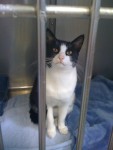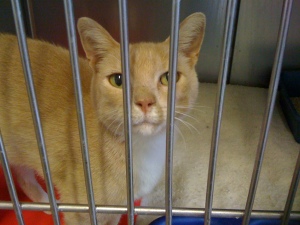In the near future, the City of New Port Richey will discuss a new animal control ordinance designed to prevent animal homelessness and improve welfare for stray dogs and cats within the City. The ordinance will encourage sterilizing pets as well as identifying pets by using collars, license tags, and registered microchips. I hope the citizens of New Port Richey will embrace this important step in improving the lives of dogs and cats in our community. The mention of licensing, tagging, and microchipping pet cats will likely cause anxiety for cat owners, especially since there has never been an official concern for the welfare of cats in Pasco County
Such ordinances are nothing new for dog owners. Control efforts for canines have effectively reduced the number of dogs surrendered to local shelters and significantly reduced euthanasia rates for local dogs. The same good news does not apply to cats, however.
Historically, our animal control efforts have ignored cats in an effort to save taxpayer’s money. But the principle of “unintended consequences” applies. By doing nothing about cats, the most common animal surrendered now surrendered to our local animal shelters is feline. More than 7000 cats are handed over by citizens to the local animal shelter each year. Less than 10% of those cats leave the shelter alive. That is unacceptable.
The new ordinance will not result in animal control officers searching your neighborhood for loose cats. Nobody has the time or inclination to do that. But the new ordinance will ask cat owners to buy a license for your rabies-vaccinated cat to wear attached to its collar. If you also have your cat microchipped and sterilized, then the cost of the license will be reduced. Funds from the sale of cat licenses will support a fund for subsidizing spay/neuter costs for pet-owning residents of New Port Richey. The funds will also subsidize Trap/neuter/Return efforts to reduce the numbers of free-roaming and unowned cats in the City.
Some will worry that collars aren’t safe for cats, or that cats will refuse to wear such collars. Others will refuse to buy licenses because they keep their pet cats indoors. These are common misconceptions that lead to more suffering by cats. Cats do find ways to get outdoors and become lost. My own cat snuck out one evening and went missing for three months before her microchip helped her find her way back to me. And research shows that cats can safely wear collars. Of course, the collars must fit well, be the type that will break away if caught on an object, and the cat must be allowed to become familiar with the new life-saving tool around its neck. The good news for bird lovers is that research also shows that adding a tiny bell to a cat’s collar significantly reduces the number of birds and other wildlife taken as prey by outdoor pet cats.
Indeed, responsible cat owners will want their cats to wear life-saving collars. Hopefully, it will become the new fashion craze for cat lovers in New Port Richey. And hopefully, all the cats will enjoy the tinkling of tiny bells at holiday time.
Happy Holidays!
If you want more information about how cat collars and identification can save lives, here are some resources for you:
Arm and Hammer Free Cat ID Tag ( just buy two boxes of cat litter with baking soda)
http://www.armandhammer.com/Free-Pet-Tag.aspx
http://www.armandhammer.com/news/id-tags-and-microchips-key-to-your-cats-safety.aspx
Dr.Lord’s StudyAbout the Safety of Cat Collars
http://avmajournals.avma.org/doi/abs/10.2460/javma.237.4.387
Good Background on Types of Collars for Cats from FAB Cats
http://www.fabcats.org/owners/safety/collars/info.html
Research from the Royal Society for the Protection of Birds on How Cat Collars Reduced Predation
http://www.rspb.org.uk/Images/catsandcollars2_tcm9-133147.pdf





